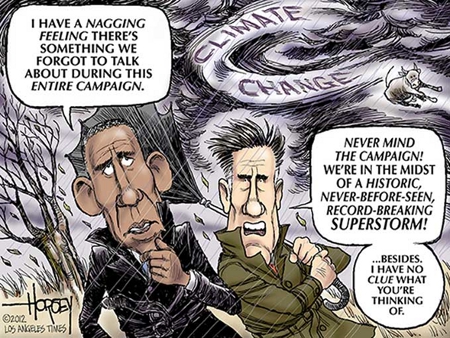Divergent Energy Policies: Germany and the United States
2012 U.S. Presidential Election

Climate change was not an issue of the 2012 U.S. presidential election. Neither candidate saw an advantage to bring it up. In his second term, Obama has indicated that he will pursue his climate change policy goals through executive actions not requiring congressional approval. Examples include: a new EPA rule limiting GHG emissions by new natural gas- and coal-fired power plants and proposed new regulation of methane emissions by the oil and gas industry.
Other approaches would be to subsidize alternatives to fossil fuels including:
- Government programs of research to develop new renewable energy and energy conservation technologies
- Price subsidies for renewable energy or energy conservation adoption.
- Price premiums for energy produced through renewable technologies
- Requirements that a certain percentage of energy supply be provided by renewables.
An example of the use of subsidies would be the American Recovery & Reinvestment Act (ARRA) of 2009 ($800 billion) passed during Obama’s first term. Of this $800 billion economic stimulus package, approximately one-tenth went to support green energy (research, weatherization programs, green jobs training, smart-grid, tax credits to solar, biomass, wind).

Solyndra, a solar photovoltaic company, received $535 million loan through ARRA but subseqently filed for bankruptcy in September 2011. The Solyndra case was used by detractors of ARRA as an example that the government does a poor job in picking winners through its subsidy programs.
